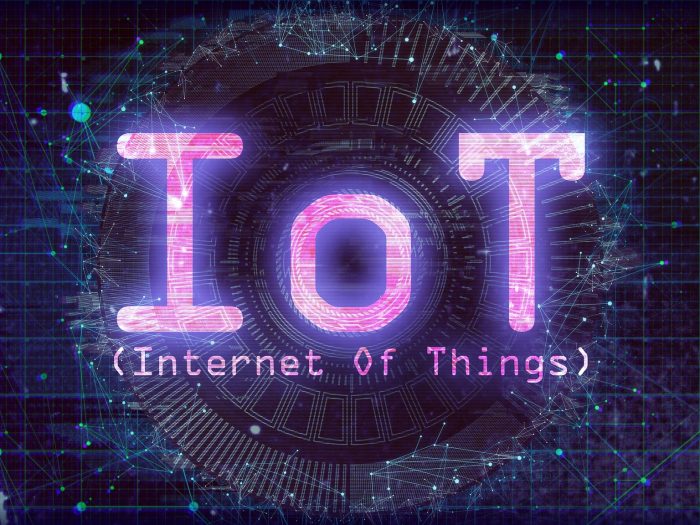Enterprises are still uncertain despite the fact that IoT as service models are driving growth. Following are some of the reasons to consider this model.
In 2020, IoT as a service may be a trend that you cannot overlook.
Let us generally take a look at the service market before we dive into Roombas or door sensors service. The as-a-service market is not something that is new. Therefore, for most people who use it as a service model, there are efficiency benefits and an ample cost.
The model permits customers to use only those means that are required at the time when a product is sold as a service. As a result of this, as-a-service models are best for developments with variable demand: where there are quick spikes in the needs of the customers. As-a-service models also facilitate the customers to swiftly tear down and set up new resources and to pay as they go instead of incurring main capital costs upfront.
The as-a-service model has provided progress. According to a recent report by IDC, it is specified that in 2018 the global cloud services market (SaaS) grew approximately 28% year after year with revenues tallying up to nearly 184 billion US dollars. This growth rate is 4.6 times more than that of the IT industry combined.
According to the research director at Software as a service at IDC, Frank Della Rosa, “Software as a Service (SaaS) sustained to be the most highly deployed cloud segment, representing a commanding 63% of the total cloud market profits”.
The question here is that what if we replace cloud solutions, applications and virtual services with physical Internet of Things (IoT) devices? As 5G, connected systems and edge computing continues to grow in the market, is there a place for IoT as a Service?
The Market is Ready to Help You Manage Your Connected Devices
The short answer to this is yes, there will certainly be a market to help you manage, deliver and control connected devices-as-a-service. This depends mainly on your goal. IoT as-a-service is already on the rise and being is being implemented by a number of organizations.
The following are some real-world examples:
Connected microgrids. With the increase in natural disasters ranging from wildfires to floods, most of the organizations are using microgrids and they have gone beyond the outdated generators as sources of power in cases of emergencies. A microgrid is a self-supporting energy system that aids a distinct geographic area, such as a neighborhood, college campus or a hospital complex. The new microgrid technologies can totally manage the grid for you too. In California, one microgrid company offers a solution for resiliency tasks with a clean, reliable and utility-grade backup power solution for big industrial and commercial facilities that are facing prolonged outages. The company connects and manages the microgrid by pinpointing the problems, proposing maintenance and observing the performance of the unit. It is very critical to stay up and running when it comes to power solutions like these. IoT as a service solution leverages the insights and data feeds to make the power grids running as it goes from reactive to proactive.
Connected cooling and airflow systems. These type of systems can exist in a hospital, manufacturing facility, or anywhere where a proactive eye on guaranteeing good and cooling airflow is required. A manufacturer from Israel has designed a connected air conditioning unit to report errors back to the company so that the company is aware that a unit is in need of a repair. Many of the United States’s appliance manufacturers are also in the mix too.
Connected utilities. This is a very important IoT as a service use scenario. Smart metering at home allows a utilities company to give more accurate readings and also when a neighborhood requires a service. The already available smart gas meters help the suppliers of natural gas to address such challenges as high power consumption, low metering success rates, and even unstable data transmission. The connected meters, however, require architecture support in order to get to this point, for example, the NB-IoT (Narrowband Internet of Things) technology delivers mass connectivity, security, low power consumption, wide coverage with cost-effectiveness.
IoT as Service offerings provides other knowledge as well. For example, a major cloud provider offers IoT Central. This platform supports the enterprises with the positioning of Internet of Things (IoT) applications without feeling the need of having in-house proficiency. Early adopters include Rolls Royce, ThyssenKrupp Elevator and Sandvik Coromant.
The aim of this type of IoT-as-a-service model is to make it easy to deploy and manage the connected devices. You are going to experience central device management, including analytics and advanced rules, that are going to help you reconfigure, update and fix devices. From here, the IoT-aaS solution will further help you to monetize and scale the connected ecosystem.
There are some challenges that you may experience when you hand over the keys to your connected devices. For this the first thing that you need to know is that how the data from these devices will navigate the cloud, the customers and the managed services partner. If you are in an industry that is subjected to a by-law, you have to understand how your partner will manage the transitory data these devices produce. If this company stores or processes personally identifiable information or personal health information, it can be a nonstarter, except it is specifically able to do so. This also raises the concern and need for the best security measures to be applied to the data. Validate your partner’s capabilities to manage business strategy, data integrity and growth while going forward. If there is an undertaking, you have to understand how the networks are designed, how the data is collected and where data will be stored and processed. You have to keep in mind that the IoT devices are undeniably targets for the bad guys.
Performance and latency is another challenge. If the provider of your IoT-as-a-service does not have an IoT enabled architecture or a good edge platform and is processing data from devices, you may have to face latency and performance issues. Keep this in mind that some of the IoT devices require sub-millisecond, capabilities. Make sure your partner is able to handle your requirements.
I Want to Invest in IoT as a Service: Now What?
If this is an area your company wants to consider it will depend on your connected devices and your business approach. Following are some steps:
- Considering your physical devices and how they are going to relate with users as well as data management and the software layer.
- Considering the objective of your business in using an as-a-service model.
- Selection of metrics in order to define whether you are keeping up with your business goals and measures in accordance with these key performance indicators as you use the as-a-service model.
- Addressing the security needs of your data to guarantee regulatory submission and data security.
- Selection of a whole platform to manage your IoT devices (e.g. IoT Central), or using particularly connected devices for your own needs, e.g. cooling system or connected microgrids.
Some people believe the IoT-as-a-service market to be immature, but that is not the case. There are many projects in the real-world where the physical devices are managed by the service providers (including the data that they produce). Furthermore, the companies that can evidently outline their managed IoT strategies will benefit the most from competitive advantage and monetization.
Our world is going to be more interactive and connected in the near future. We are rapidly bringing a digital platform to the old analog systems; which is going to need a new way of handling these technologies, along with directing the data flow through them. If connected devices or systems are in your future, you have to consider at some point how you want to deliver and manage those services. You will require staff and expertise, and you will need to ensure that these devices are patched and updated.
It’s important to start the design process now and get the right partners in place to help your IoT-a-a-service strategy take off.



